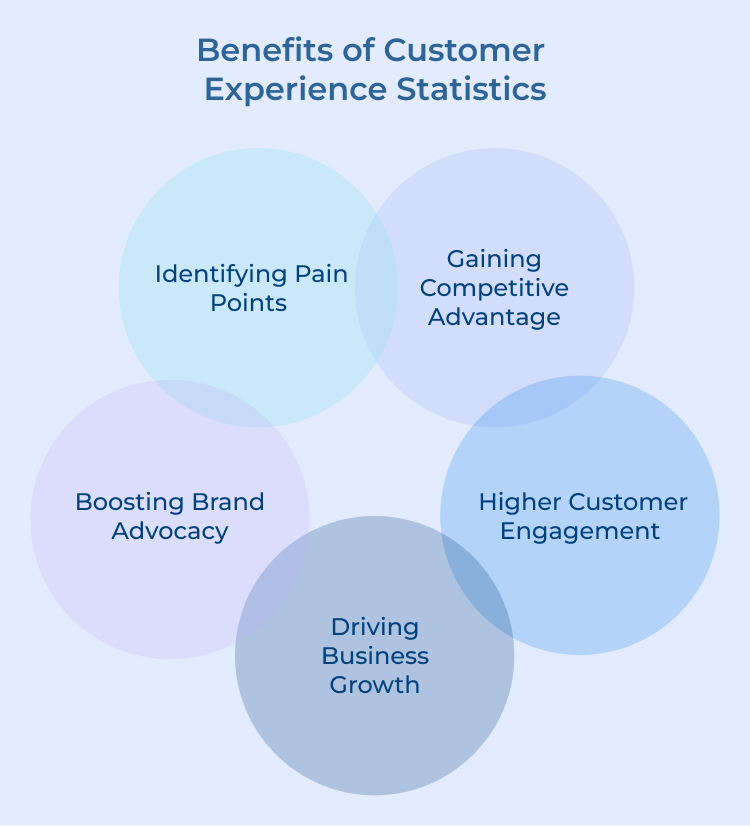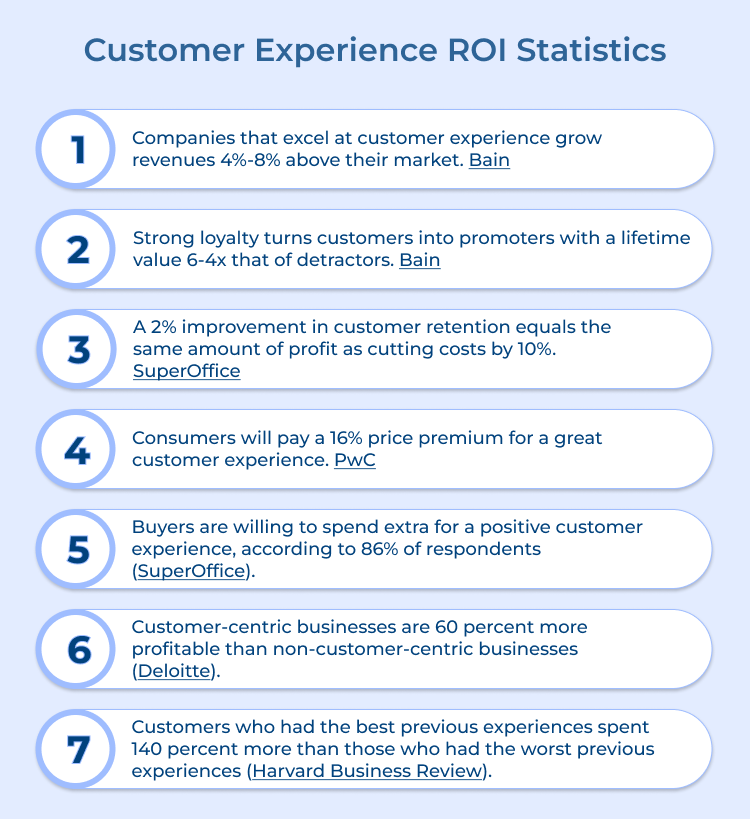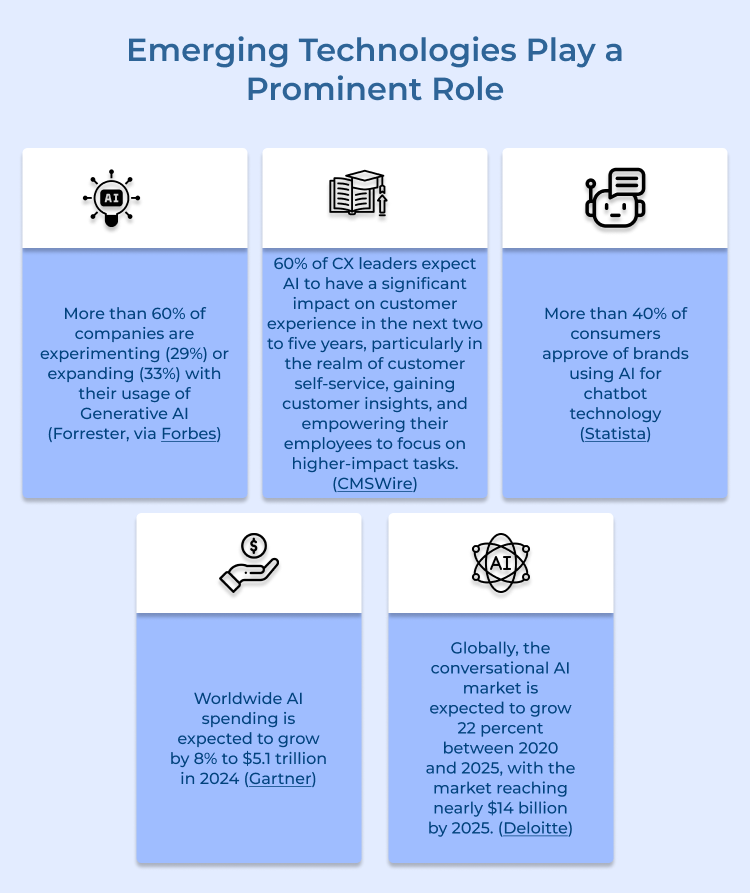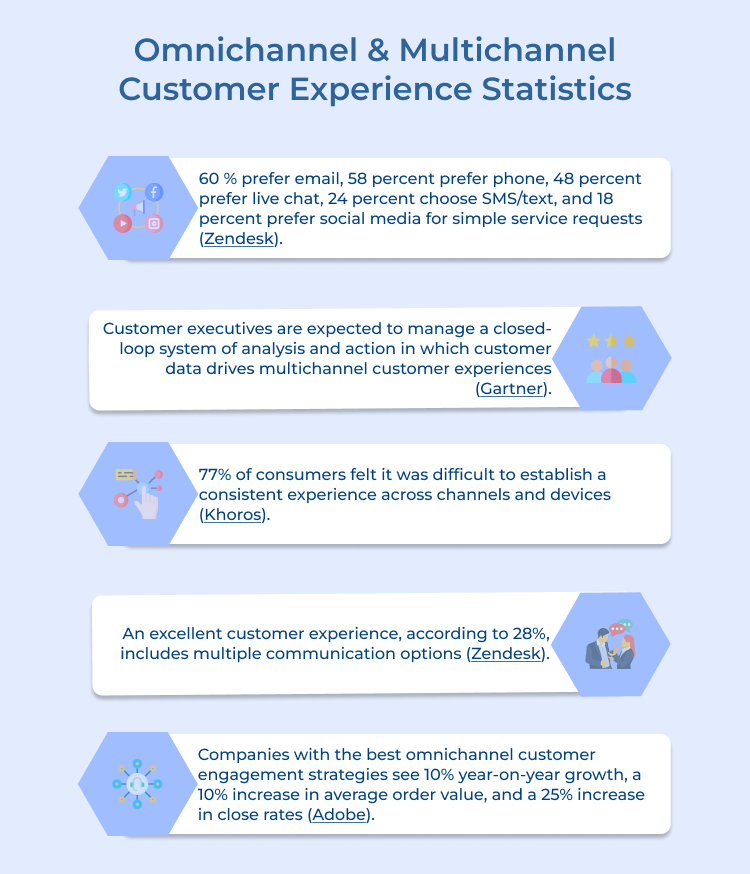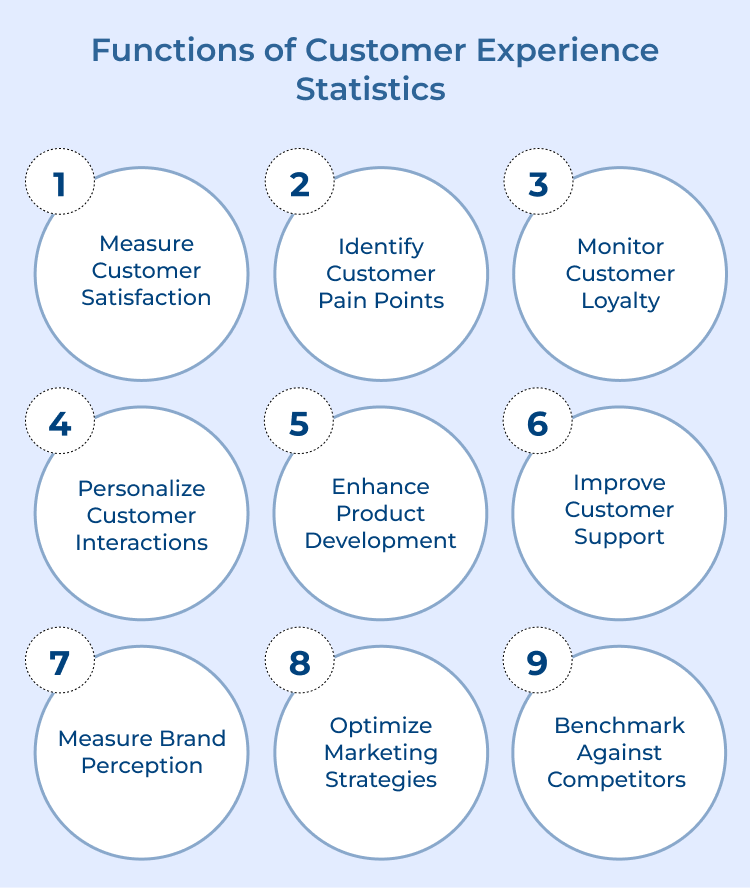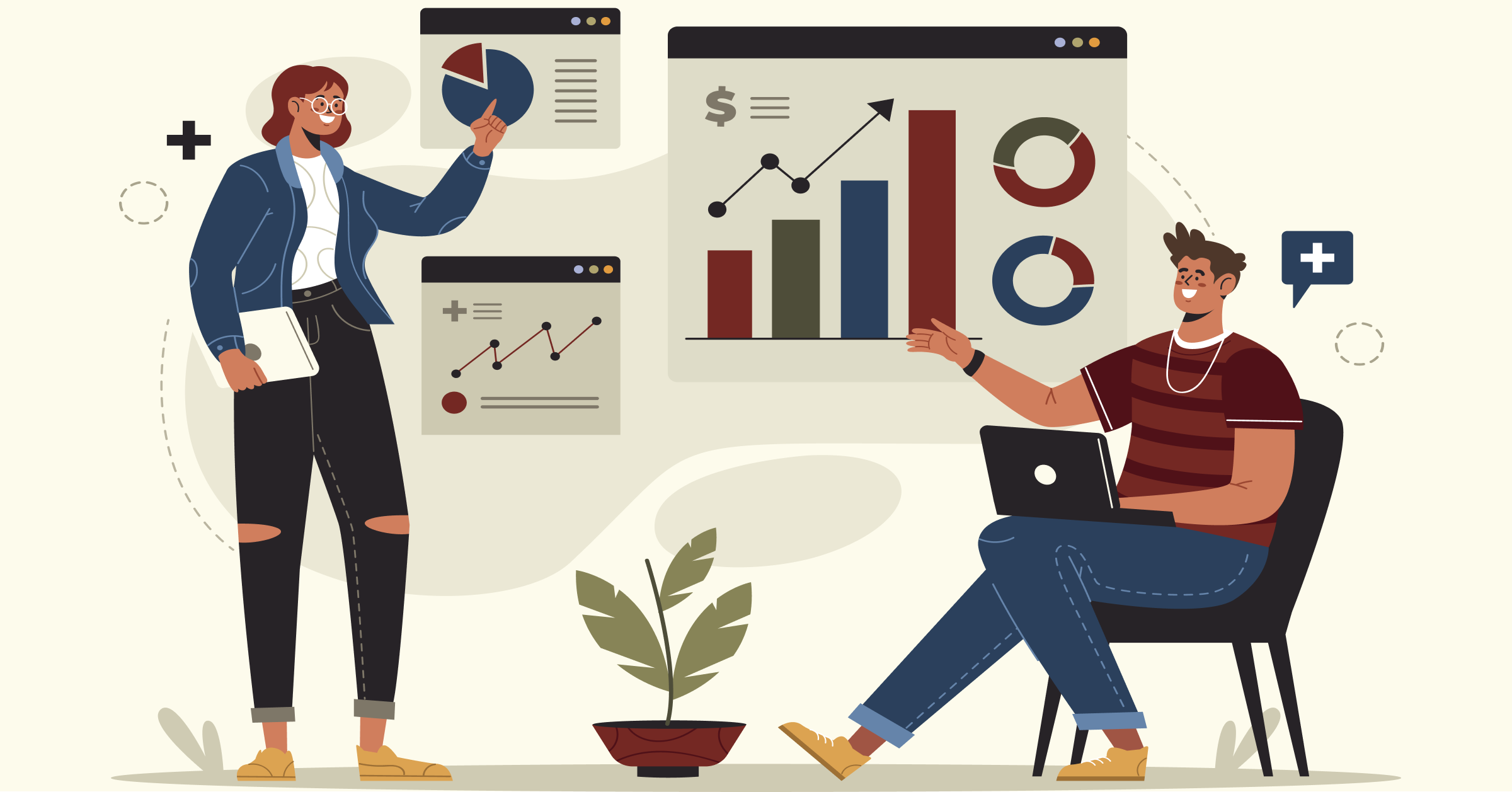Here are the functions of customer experience statistics that every business should consider:
1.Measure Customer Satisfaction
Customer experience statistics can be used to gauge customer satisfaction levels. Collecting feedback from customer satisfaction surveys, you identify the areas that require special attention and take steps to enhance the CX.
2. Identify Customer Pain Points
Analyzing customer experience statistics helps identify pain points in the customer journey. Understand where customers are facing difficulties, then make the necessary adjustments to eliminate these pain points and create a smoother customer experience.
3. Monitor Customer Loyalty
Customer experience statistics help measure customer loyalty by tracking customer retention rates and repeat purchase behavior. High customer loyalty indicates that customers are loyal to your brand, while low customer loyalty may suggest problems with the customer experience.
4. Personalize Customer Interactions
Gain in depth insights into individual customer preferences and behaviors. Using the data, personalize interactions and tailor their marketing efforts to better meet customer needs, resulting in a more satisfying experience.
5. Enhance Product Development
Analyzing customer experience statistics help businesses gain valuable insights into product performance, including customer feedback and satisfaction levels. The information can be used to identify areas for improvement, optimize existing products, or develop new products that align with customer expectations.
6. Improve Customer Support
Statistics for customer experience can be used to evaluate the effectiveness of customer support channels, such as response times and issue resolution rates. Identifying problem areas help businesses enhance their customer support processes and ensure satisfactory resolutions.
7. Measure Brand Perception
Customer experience statistics can provide insights into how customers perceive your brand. Tracking brand perception metrics, such as brand reputation and brand sentiment helps you learn how their customers view their products as well as align with customer perceptions.
8. Optimize Marketing Strategies
Analyzing customer experience statistics can help identify which marketing channels or campaigns are most effective in reaching and engaging customers. By leveraging the data, businesses optimize their marketing strategies and allocate resources to the channels that generate the highest return on investment.
9. Benchmark Against Competitors
Customer experience statistics can be used to compare your business’s performance against competitors in the industry. The benchmarking enables businesses to identify industry best practices, learn how they stack up against the competition and make informed decisions to stay ahead in delivering an exceptional customer experience.
Examples of Customer Experience Statistics
Companies are realizing the importance of putting their customers at the center of their strategies. Let us delve into real-time examples to get a better understanding.
1.Customer experience drives revenue: According to a study by Oracle, 74% of senior executives believe that customer experience impacts their organizations’ profitability and revenue. The finding highlights the direct link between customer experience and a company’s financial success.
2. Personalization matters: A survey conducted by Epsilon shows that 80% of customers are more likely to make a purchase from a brand that offers personalized experiences. Tailoring products to individual preferences can significantly impact customer satisfaction and increase sales.
3. Word of mouth is powerful: Good customer experiences can lead to positive word-of-mouth referrals. In fact, a study by Nielsen found that 92% of consumers trust recommendations from friends and family more than any form of advertising. It emphasizes the importance of creating memorable experiences that customers will want to share with others.
4. Dissatisfied customers share their experiences: It is not just positive experiences that can be amplified through word of mouth. A survey by Zendesk revealed that 95% of customers share bad experiences with others. It highlights the need for businesses to proactively address customer concerns and provide effective solutions to prevent negative feedback from spreading.
5. Customer loyalty increases revenue: A report by Temkin Group explains about loyal customers being 5 times more likely to repurchase, 5 times more likely to forgive mistakes and 4 times more likely to refer a friend. Investing in building strong relationships with customers and providing exceptional experiences can have a substantial impact on long-term revenue.
6. Social media amplifies customer experiences: The widespread use of social media platforms empowers customers to share their experiences to a wider audience. According to a study by Lithium, 55% of consumers who have a negative experience share it on social media. It describes the importance of monitoring social media channels and promptly addressing any customer concerns or issues to prevent a potential reputation crisis.
7. Customer experience influences brand loyalty: A survey by PwC found that 73% of customers consider customer experience as an important factor in their purchasing decisions. Customers are more likely to remain loyal to a brand that consistently delivers excellent experiences and meets their expectations.
Use CX Statistics to Empower your Customer Service
Providing exceptional customer experience (CX) is a key differentiator. With the rise of digital technologies, businesses now have access to valuable CX statistics that can empower their customer service teams. I strongly believe that harnessing the power of CX statistics empowers your customer service team to provide exceptional experiences.
Businesses cannot afford to ignore the power of CX statistics in empowering their customer service. By interpreting collected data on customer satisfaction, effort, needs and performance, you make informed decisions that enhance customer experiences. So, take advantage of CX statistics and transform your customer service into a key differentiator for your business.

